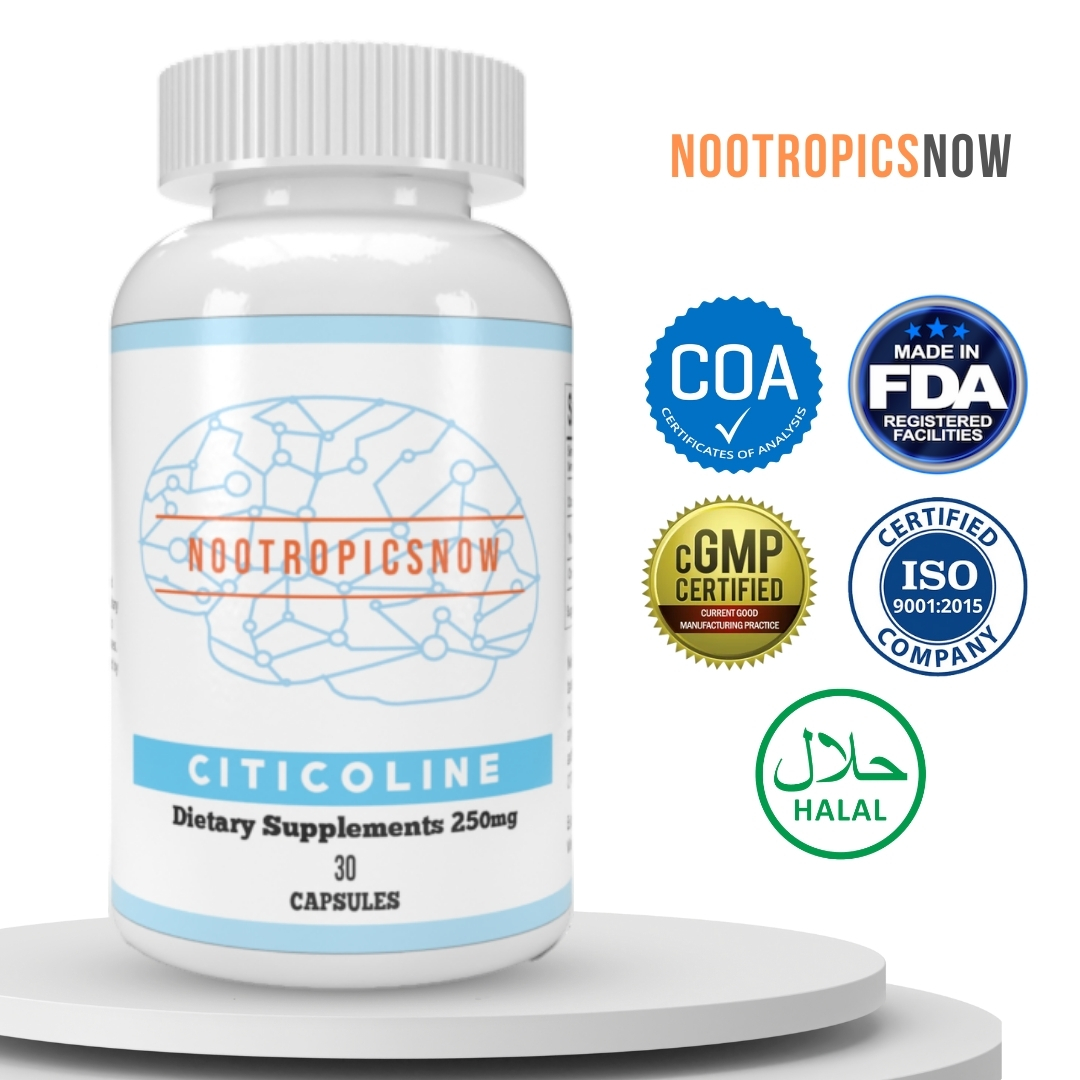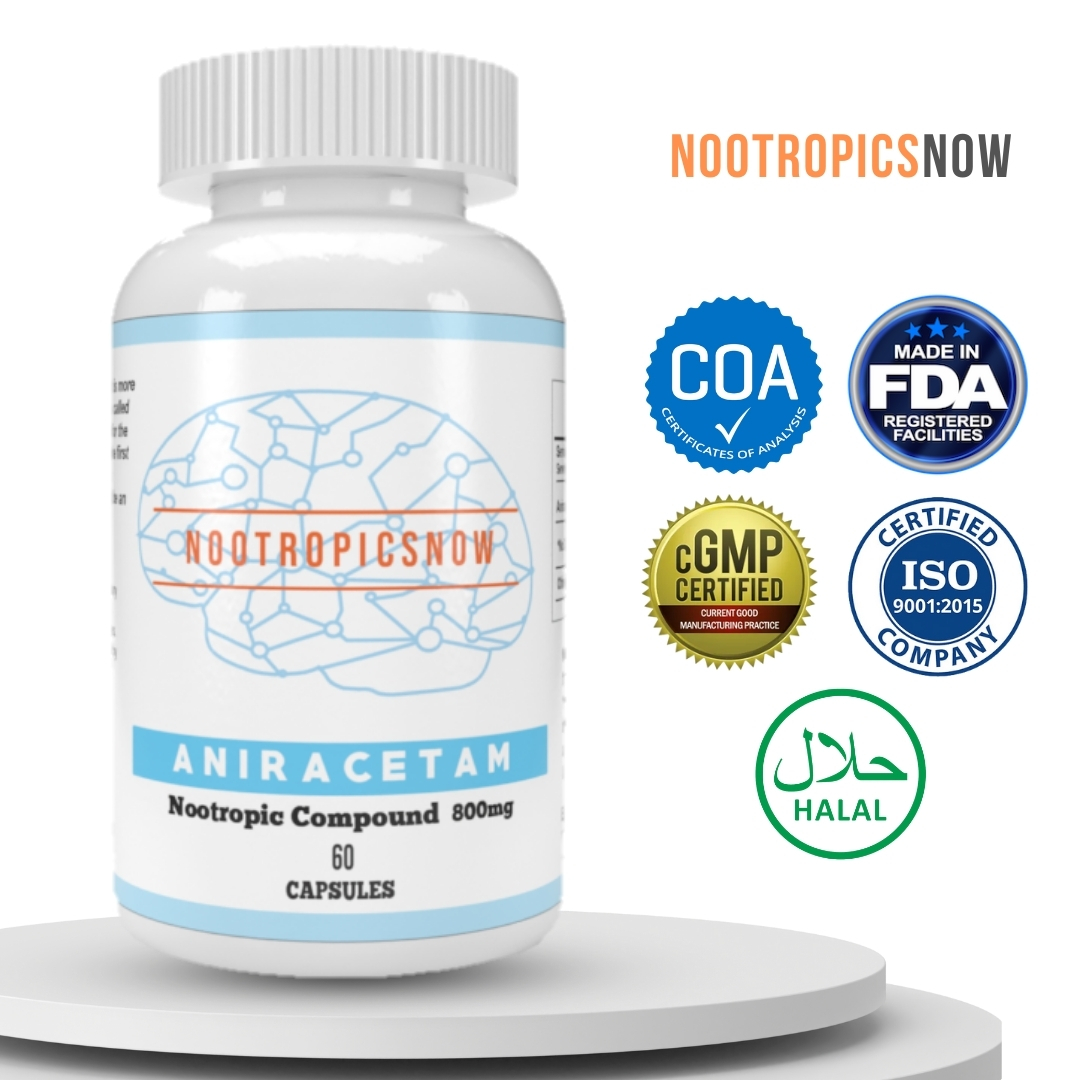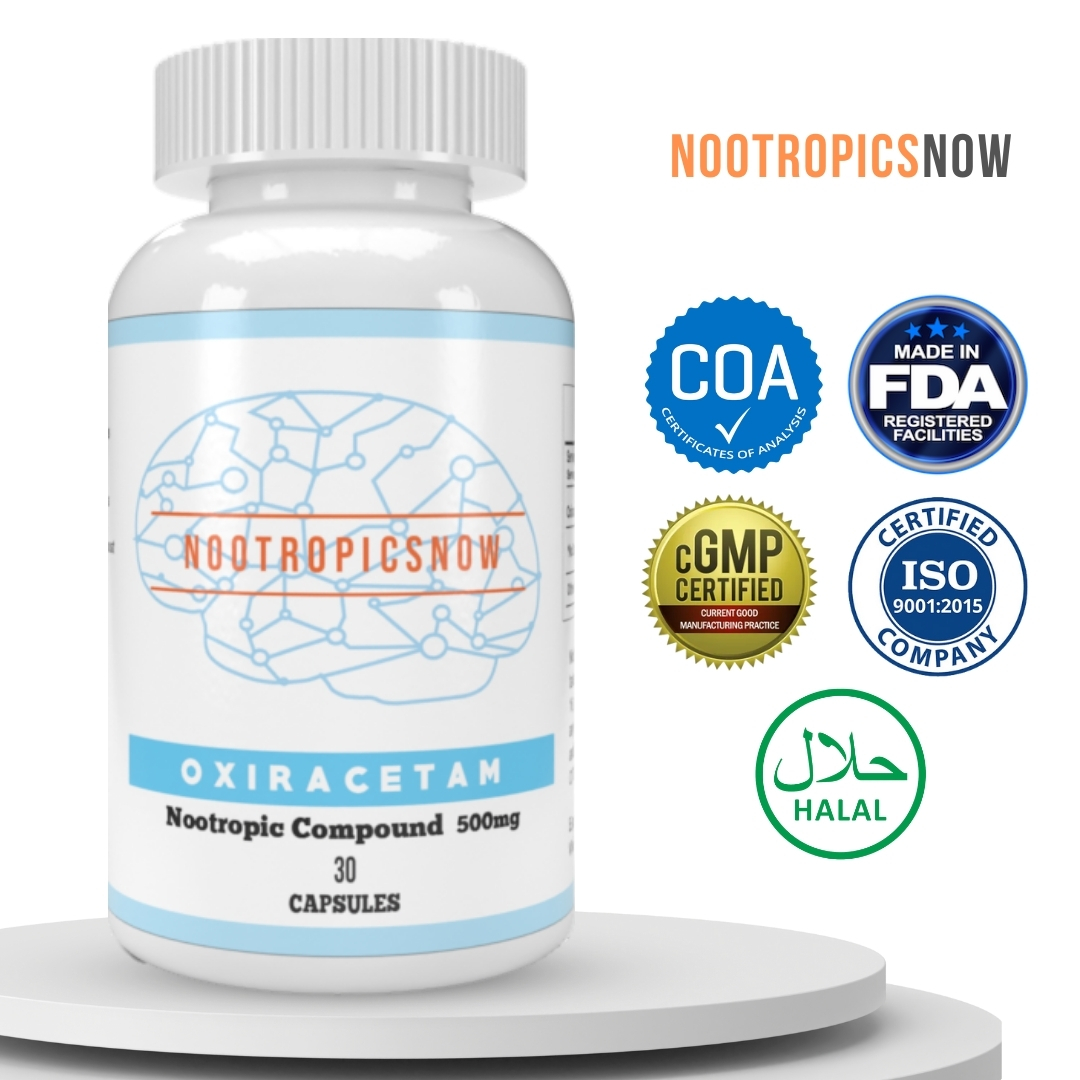Piracetam: Benefits, Uses & Side Effects

`markdown
Piracetam: Unlocking Cognitive Potential
Piracetam is a synthetic nootropic belonging to the racetam family, celebrated for its potential cognitive enhancement properties. This article delves into the intricacies of piracetam, covering its mechanisms of action, potential benefits, usage guidelines, safety considerations, and a comparison with other nootropics. Understanding these aspects is crucial for individuals seeking to enhance their cognitive functions.
Understanding Piracetam
Piracetam, first synthesized in 1964 by Dr. Corneliu Giurgea, holds the distinction of being the original nootropic. It is a cyclic derivative of gamma-aminobutyric acid (GABA), although it doesn’t directly affect GABA receptors. Piracetam’s core function revolves around enhancing cognitive abilities, particularly memory and learning, without sedative or stimulant effects.
How Piracetam Works: The Mechanism of Action
Piracetam’s exact mechanism of action is not fully understood, but several theories exist. Unlike some nootropics that directly impact neurotransmitter levels, piracetam primarily influences cell membrane fluidity. Specifically, it interacts with polar head groups of phospholipids, enhancing membrane flexibility and overall function. This increased fluidity may facilitate better communication between brain cells. Moreover, piracetam modulates neurotransmitter systems, particularly the cholinergic and glutamatergic systems. It is believed to enhance the activity of acetylcholine, a neurotransmitter crucial for memory and learning. Furthermore, piracetam may indirectly affect glutamate receptors, playing a role in synaptic plasticity and learning processes. Finally, piracetam exhibits neuroprotective properties, potentially shielding brain cells from damage caused by hypoxia or toxins.
Potential Cognitive Benefits of Piracetam
Extensive research suggests a range of cognitive benefits associated with piracetam use. However, the effectiveness can vary among individuals, and results are often influenced by dosage and individual physiology.
Memory Enhancement
One of the primary reasons individuals use piracetam is to improve memory. Studies have shown piracetam can enhance both short-term and long-term memory, particularly in individuals with age-related cognitive decline. It may facilitate the consolidation of memories and improve recall abilities.
Improved Learning Capacity
Piracetam has been reported to enhance learning ability, making it a favorite among students and individuals engaged in intellectually demanding tasks. It may expedite the acquisition of new information and improve comprehension.
Enhanced Focus and Concentration
Some users report enhanced focus and concentration levels with piracetam. This can be particularly beneficial for individuals with attention deficits or those seeking to improve productivity. The improved neural communication contributes to sustained attention spans.
Neuroprotection
Piracetam possesses neuroprotective properties, potentially safeguarding brain cells against damage from various insults, including hypoxia and toxins. This protective effect may contribute to overall brain health and resilience against age-related cognitive decline.
Improved Communication Between Brain Hemispheres
Piracetam is theorized to improve communication between the left and right hemispheres of the brain. This enhanced communication could potentially lead to increased creativity, improved problem-solving skills, and enhanced cognitive integration.
Dosage and Administration
Finding the right piracetam dosage is vital for maximizing benefits and minimizing potential side effects. The optimal dosage varies depending on individual factors such as weight, sensitivity, and desired effects.
Standard Dosage Guidelines
A typical starting dose of piracetam is around 1.6 grams per day, divided into two or three doses. The dosage can then be gradually increased up to 4.8 grams per day, depending on individual response and tolerance. It’s generally recommended to start with a lower dose to assess sensitivity.
Cycling Piracetam
Some users prefer to cycle piracetam, meaning they use it for a specific period followed by a break. This approach aims to prevent tolerance and maintain its effectiveness over time. A common cycling pattern involves using piracetam for several weeks or months, followed by a one- or two-week break.
Administration Methods
Piracetam is typically taken orally, available in both capsule and powder form. The powder form can be dissolved in water or juice for consumption. Some users also opt for sublingual administration, placing the powder under the tongue for faster absorption.
Potential Side Effects and Safety Considerations
Piracetam is generally considered safe, and side effects are relatively uncommon. However, like any supplement, some individuals may experience adverse effects.
Common Side Effects
Common side effects of piracetam include headaches, gastrointestinal upset, insomnia, anxiety, and nervousness. These side effects are typically mild and transient, resolving on their own or with dosage adjustment.
Rare Side Effects
Rare side effects may include allergic reactions, such as skin rashes or itching. In very rare cases, piracetam has been associated with more serious side effects, such as seizures or hallucinations.
Precautions and Contraindications
Piracetam is contraindicated in individuals with severe kidney impairment. It should also be used with caution in individuals with bleeding disorders or those taking anticoagulant medications, as it may increase the risk of bleeding. Additionally, pregnant and breastfeeding women should avoid piracetam due to a lack of safety data.
Stacking Piracetam with Other Nootropics
Stacking involves combining multiple nootropics to achieve synergistic effects. Piracetam is often stacked with other supplements to enhance its cognitive benefits.
Choline Sources
One of the most common piracetam stacks involves combining it with a choline source, such as Alpha GPC or CDP-Choline. Piracetam increases acetylcholine turnover, potentially depleting choline levels and leading to headaches. Supplementing with choline can alleviate this side effect and enhance piracetam’s cognitive effects.

View Product

View Product
Other Racetams
Piracetam is sometimes stacked with other racetams, such as aniracetam or oxiracetam, to create a more potent cognitive-enhancing stack. Each racetam has unique properties, and combining them may result in a broader range of cognitive benefits.

View Product

View Product
Caffeine and L-Theanine
Some users stack piracetam with caffeine and L-theanine to improve focus and concentration. Caffeine provides a stimulant effect, while L-theanine promotes relaxation without drowsiness. This combination can provide a balanced and sustained boost in cognitive performance.

View Product
Piracetam vs. Other Nootropics
The nootropic market offers a wide range of compounds, each with distinct characteristics. Comparing piracetam to other popular nootropics helps to understand its specific role.
Piracetam vs. Modafinil
Modafinil is a potent wakefulness-promoting agent often used to treat narcolepsy. While both piracetam and modafinil are considered nootropics, they have different mechanisms of action and effects. Modafinil primarily promotes wakefulness and alertness, while piracetam primarily enhances cognitive functions such as memory and learning.
Piracetam vs. Aniracetam
Aniracetam is another racetam nootropic known for its anxiolytic (anxiety-reducing) and mood-enhancing effects. Compared to piracetam, aniracetam is considered more potent and faster-acting. However, piracetam may be more effective for long-term cognitive enhancement.
Piracetam vs. Alpha-GPC
Alpha-GPC is a choline source often used to enhance cognitive function. While both piracetam and Alpha-GPC can improve memory and learning, they work through different mechanisms. Piracetam primarily enhances cell membrane fluidity and modulates neurotransmitter systems, while Alpha-GPC increases acetylcholine levels in the brain.
Is Piracetam Legal?
The legal status of piracetam varies from country to country. In many countries, including the United States, piracetam is not regulated as a prescription drug, and it is available for purchase as a dietary supplement. However, some countries may require a prescription for piracetam.
Buying Piracetam Online
Purchasing piracetam online is a convenient option, but it is essential to ensure you are buying from a reputable source. Look for online vendors that provide third-party testing results to verify the purity and potency of their products. Avoid purchasing piracetam from unverified sources, as they may sell counterfeit or adulterated products. Consider the following:
The Future of Piracetam Research
Piracetam continues to be a subject of ongoing research, with scientists exploring its potential applications in various cognitive and neurological disorders. While current research has demonstrated several potential benefits, further studies are needed to fully elucidate its mechanism of action and optimize its use for cognitive enhancement. Moreover, more research is necessary to evaluate the long-term safety and efficacy of piracetam.
Piracetam and Ethical Considerations
Using piracetam and other nootropics raises ethical considerations, particularly in competitive environments such as academics and the workplace. While nootropics can enhance cognitive performance, questions arise about fairness and equity if some individuals have access to these substances while others do not. Moreover, there are concerns about the potential for coercion or pressure to use nootropics in environments where cognitive enhancement is highly valued. It is essential to have open and honest discussions about the ethical implications of nootropic use to ensure these substances are used responsibly and equitably.
Conclusion: Piracetam, A Tool For Cognitive Enhancement
Piracetam is a well-established nootropic that has been studied for its potential to enhance memory, learning, focus, and neuroprotection. Its mechanism of action involves improving cell membrane fluidity and modulating neurotransmitter systems. Piracetam is generally considered safe, but it can cause side effects in some individuals. Stacking piracetam with choline sources or other nootropics can enhance its cognitive benefits. As with any supplement, it is important to consult with a healthcare provider before using piracetam. By understanding its potential benefits, safety considerations, and ethical implications, individuals can make informed decisions about whether piracetam is the right choice for their cognitive enhancement needs.
`
Piracetam: The Original Nootropic
Piracetam, often hailed as the original nootropic, boasts a rich history and a significant presence in the cognitive enhancement community. Developed in 1964 by Dr. Corneliu Giurgea, it laid the foundation for the field of nootropics, sparking interest in substances that could enhance cognitive function. Unlike newer, more potent nootropics, piracetam offers a gentler approach to cognitive enhancement, making it a popular choice for beginners and those seeking subtle yet noticeable improvements. Its mechanism of action, while not fully understood, revolves around influencing neurotransmitter systems and improving neuronal membrane fluidity. Consequently, users often report enhanced memory, improved learning capacity, and increased focus.
A Detailed Look at Piracetam
Piracetam is a synthetic derivative of gamma-aminobutyric acid (GABA), a neurotransmitter that inhibits nerve impulses in the brain. However, piracetam doesn’t directly affect GABA receptors. Instead, it primarily works by modulating the activity of acetylcholine, a neurotransmitter crucial for memory and learning. Furthermore, piracetam interacts with other neurotransmitter systems, including those involving glutamate and dopamine, contributing to its diverse cognitive effects. Chemically, it is a 2-oxo-1-pyrrolidine acetamide, a relatively simple molecule compared to other synthetic nootropics. This structural simplicity might contribute to its favorable safety profile.
How Piracetam Works
The precise mechanisms of action for piracetam are still being investigated. However, several key effects have been identified. It’s believed to enhance the fluidity of neuronal cell membranes, which improves communication between brain cells. This enhancement is achieved by interacting with the polar head groups of phospholipids within the cell membrane. This increased fluidity facilitates the binding of neurotransmitters to their receptors and boosts overall neuronal signaling.
Additionally, piracetam modulates neurotransmitter systems, including the cholinergic and glutamatergic systems. By influencing these systems, it optimizes synaptic plasticity, which is crucial for learning and memory formation. This modulation helps to improve cognitive function by making neural connections more efficient and resilient.
Furthermore, piracetam is shown to have neuroprotective effects, safeguarding neurons from damage caused by toxins and oxidative stress. This protection is attributed to its antioxidant properties and its ability to enhance blood flow to the brain, providing neurons with more oxygen and nutrients.
Benefits of Piracetam
Piracetam’s benefits span across various cognitive domains, making it a versatile nootropic. These benefits include:
While these benefits are commonly reported, individual experiences can vary. Factors such as dosage, individual physiology, and lifestyle can influence the effects of piracetam. Therefore, starting with a low dose and gradually increasing it is advisable to assess individual tolerance and optimal dosage.
Piracetam Dosage and Usage
Determining the right dosage of piracetam is critical to maximizing its benefits and minimizing potential side effects. The optimal dosage can vary depending on individual factors, such as body weight, sensitivity, and desired effects. It is generally recommended to start with a low dose and gradually increase it until the desired effects are achieved.
A common starting dose is around 1.6 grams per day, divided into two or three doses. This dose can be gradually increased to 4.8 grams per day, depending on individual tolerance and response. Some users may find that higher doses are more effective, while others may experience optimal benefits at lower doses.
Piracetam has a relatively short half-life, which means it is eliminated from the body quickly. To maintain consistent levels in the bloodstream, it is best to divide the daily dose into multiple administrations throughout the day.
It is often taken with choline sources to enhance its effects.
Piracetam Stacks
Stacking piracetam with other nootropics can enhance its effects and target multiple cognitive functions simultaneously. Common stacks include:
Side Effects of Piracetam
Piracetam is generally well-tolerated, especially at recommended doses. However, some users may experience mild side effects, which usually subside with continued use or dosage adjustment. Common side effects include:
Rare but more serious side effects can include allergic reactions, skin rashes, and changes in blood pressure. If you experience any severe side effects, discontinue use and consult a healthcare professional.
Legality and Availability of Piracetam in the Philippines
The legal status of piracetam varies depending on the country. In the Philippines, piracetam is available as a prescription medication for specific medical conditions, such as cognitive impairment following stroke or dementia. While it is not explicitly prohibited for personal use, purchasing piracetam without a prescription may be challenging.
However, numerous online vendors ship piracetam to the Philippines. When purchasing online, selecting reputable sources is crucial to ensure product quality and authenticity. Look for vendors with positive reviews, third-party testing, and transparent sourcing practices. Be mindful of customs regulations and potential import restrictions when ordering piracetam from overseas.
Given this information, purchasing products such as Oxiracetam is best done through trusted vendors online Oxiracetam Nootropics.
Real-World Experiences and User Reviews
User reviews and testimonials can provide valuable insights into the real-world experiences of piracetam. Many users report positive effects on memory, focus, and learning, while others may not experience significant benefits. Reading a variety of reviews can provide a balanced perspective on piracetam’s potential benefits and limitations.
Some users emphasize the importance of combining piracetam with other nootropics to enhance its effects. Choline supplements are commonly mentioned as essential for preventing headaches and maximizing piracetam’s cognitive benefits. Others share their experiences with different dosages and administration schedules to find the optimal regimen.
Alternative Nootropics to Piracetam
While piracetam remains a popular nootropic, several alternatives offer similar or enhanced cognitive benefits. These alternatives include:
Each alternative nootropic offers unique benefits and potential side effects. It’s essential to research each substance and consider individual needs and preferences before choosing a replacement for piracetam.
Piracetam in the Philippines
When purchasing piracetam in the Philippines, prioritize quality and authenticity. Look for products from reputable manufacturers and vendors with third-party testing. Be mindful of potential counterfeit products and avoid purchasing from unverified sources.
In summary, piracetam is a well-established nootropic with a long history of use. It offers various cognitive benefits, including enhanced memory, improved learning, and increased focus. However, it’s essential to use piracetam responsibly and be aware of potential side effects and legal considerations. By conducting thorough research, starting with a low dose, and monitoring individual responses, you can harness the cognitive benefits of piracetam.

